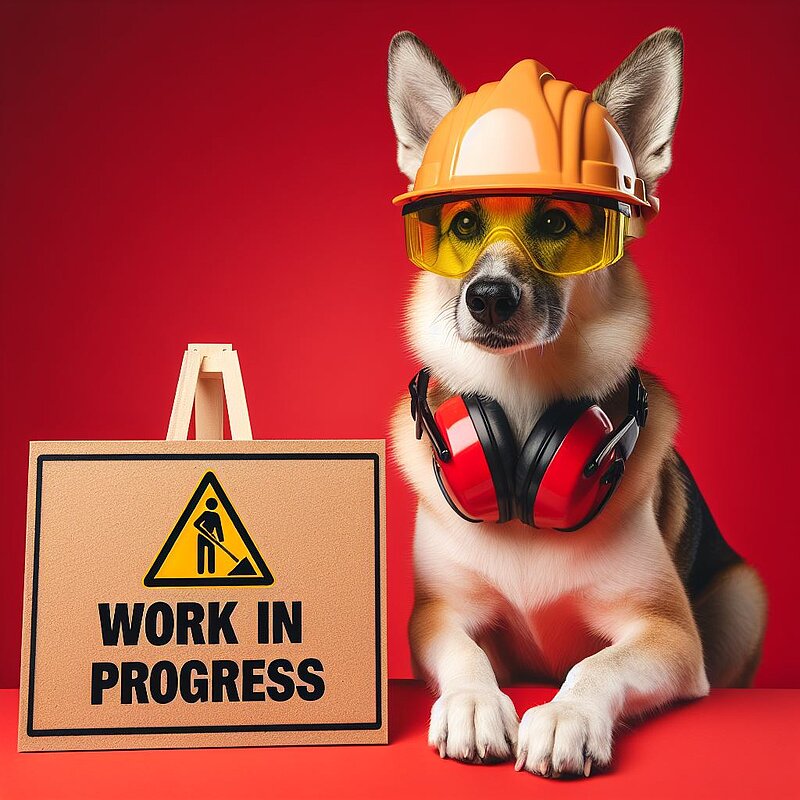
The Griffon Bruxellois: The charming little goblin with a big heart
The history of the Griffon Bruxellois
The origins of the Griffon Bruxellois date back to the 19th century in Brussels, Belgium. Originally, the breed was used as a rat catcher in stables. The Griffon Bruxellois was created by crossing local Belgian dogs with the Affenpinscher and the King Charles Spaniel. Over the years, the Griffon Bruxellois became more appreciated as a companion dog than as a working dog. The breed quickly gained popularity, especially among the nobility, and eventually became a symbol of Belgian pride.
Who is the Griffon Bruxellois suitable for?
The Griffon Bruxellois is ideal for people looking for a small but lively and intelligent companion. Thanks to its size, it is perfect for city life and adapts well to apartments. However, he is not just a lap dog - his energy and curiosity also make him attractive to active people. Families, singles and older people who have time and attention for a playful dog will find a loyal friend in the Griffon Bruxellois.
Character and behavior
The Griffon Bruxellois is known for its lively, cheerful and sometimes somewhat stubborn character. These dogs are intelligent and alert, which makes them excellent watchdogs. They are extremely loyal and love to be the center of attention. Their cheerful nature and sense of humour make them ideal family dogs that get along well with children and other pets, provided they are properly socialized.
Appearance of the Griffon Bruxellois
With its characteristic facial expression, often described as "human", the Griffon Bruxellois is unmistakable. It has a short muzzle, large round eyes and an upright posture. The coat can be rough or smooth and comes in different colors such as red, black or black and tan. Adult dogs weigh between 3.5 and 6 kilograms and reach a shoulder height of around 18 to 20 centimetres.
Care and health
The care of the Griffon Bruxellois varies depending on the coat type. Rough-haired Griffons require regular trimming and brushing to avoid matting, while smooth-haired Griffons require less grooming. Both coat types should be bathed and brushed regularly to keep the coat clean and healthy. Dental hygiene is particularly important as small dogs are prone to dental problems.
Health-wise, Griffon Bruxellois are generally robust, but as with many small breeds, they can be prone to patellar luxation (knee problems) and respiratory problems due to their short muzzle. Regular visits to the vet and a balanced diet will contribute to their health and longevity.
Training and exercise
Although the Griffon Bruxellois is small, it still needs sufficient exercise and mental stimulation. Daily walks and playtime are a must. These dogs are intelligent and learn quickly, so positive reinforcement is particularly effective in training. They love to learn new tricks and take part in activities such as agility.
Behavior with children and other animals
The Griffon Bruxellois gets on well with children, especially if it is used to them from an early age. He is playful and patient, which makes him a good playmate. He also generally gets along well with other pets, especially if he is socialized early on. However, as with all dogs, interactions with younger children should be supervised.
Recognition and interesting facts
The Griffon Bruxellois is recognized by the Fédération Cynologique Internationale (FCI) and belongs to Group 9, Section 3: Small Belgian Dog Breeds. Another interesting detail is that the breed gained popularity through the movie "As Good as It Gets" with Jack Nicholson, in which a Griffon Bruxellois played a leading role.